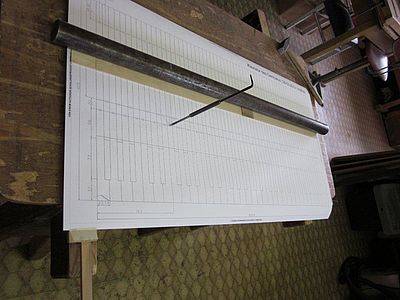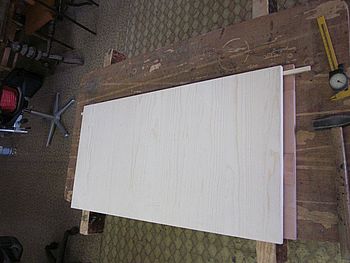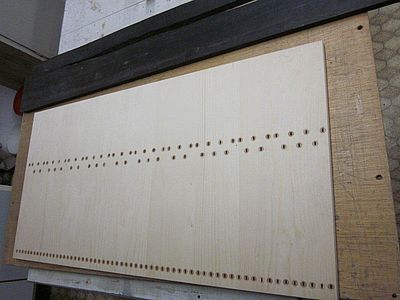10. THE BOARD AND THE FRAME...
Published on 27. May 2013 by Johannes Huefken
In the last few weeks we have produced the keyboard frame and the keyboard panel. Today the two are to be brought together. However, the performer should be asleep, because the next work should be done without a long break. As we learned in the last article, the wood is in motion. The keyboard panel corresponds to a board, which is about 40cm long and 90cm wide. Even small fluctuations in humidity cause a significant change in width with such a wide board with annual rings on top.
- Sawing the board to size
- Marking the keyboard guides
- Fixing the panel to the keyboard frame
- Drilling
1. saw the board to size
The keyboard panel is now sawn to size. You have to determine beforehand how the keyboard fronts are designed. If small front plates are to be glued on later, the thickness of the plates must be deducted from the panel depth. From this point on, work should be done away one after the other. Because now the keyboard has the final size.
2. mark the holes for the keyboard pins
The drawing must be firmly stretched on the board. The pins for the key guide are now pierced through the drawing with a pin. This marking is also centring for the drill, which drills precisely from the beginning without slipping. There are two pens for each button. With a two-armed key, one usually sits on the balance beam, the other can guide the key at the front or rear.




